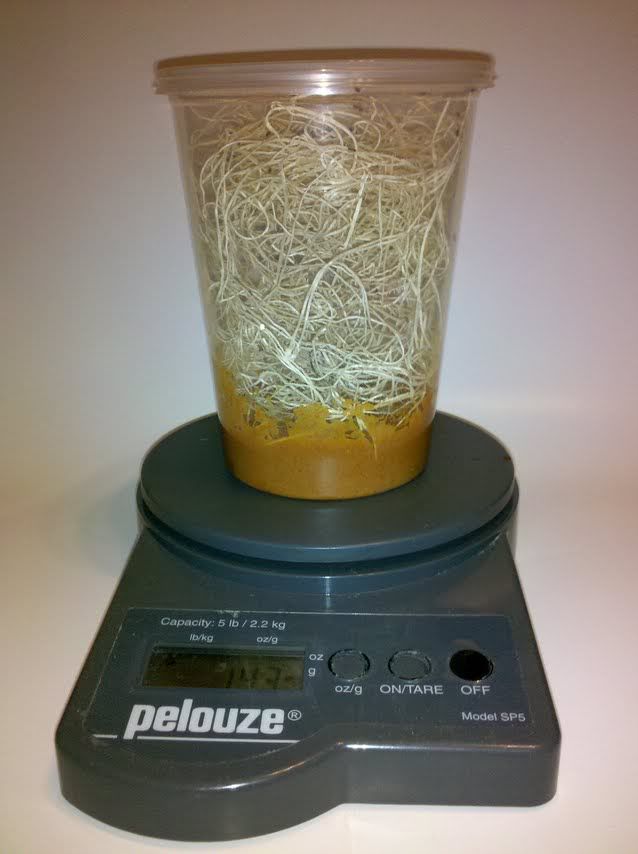Umm, wow, haven't laughed like that in a while.
Male vs. Female nutrition is quite a bit different.
Males contain less fat, and less total weight per adult thus less calories per adult consumed.
The wings of males are of little nutritional value other than acting as fiber in our diet, this is also the case with the prothorax (pronotum), found on both males and females, which is often not digested at all.
I feel safe saying females larger mass to surface ratio will equate to a higher calorie meal, more so if she is gravid because of the higher fat content.
As for how much more nutritious they might be is very much a question that would require me to know the dietary needs of your reptiles on an individual basis.
Feeding both males and females limits the overall fat content and slightly reduces the overall protein content. I feel this averaging is better than always selecting the higher protein male roaches. To me it is the same as providing a varied diet, the average of as many accepted feeders always seems to work best.
As far as nutrition goes, feeding a quality diet that supports the insects dietary needs on a consistant basis* will allow the roaches to be in top shape when they are gutloaded or dusted prior to being fed off. The primary reason for gutloading** and dusting being Ca

ratio correction. The thought process here goes past the macronutrients and moves on to the micronutrient section of nutrition. Most insects will do ok on a diet that contains the proper levels of macronutrients ie protein, fat, and carbohydrates, but long term health and reproduction suffers if particular micro nutrients are lacking. Each insect type has slight differences in micronutrient needs, and processes them into slightly differing quantities of other nutrients for use or storage for later use. Some insects save/use/convert more than others in terms of processed food (food converted into lipids, protein, organs of all types and a vast assortment of in use chemicals, etc). A good point to make here is the difference between an insect in the process of molting vs. one that is not, the one molting is flooded with hormones driving the molting process that are not present when the insect is not molting; these hormones are new chemical formations in the insect that were not there several hours prior to molting. Without the proper levels of micronutrient in the insects diet molting is not possible because the chemical precursers do not exist to form the hormones that drive the molting process. This lack of micronutrients gets passed on to the animal that consumes the insect, bad juju. Another point is bioavailability of the micronutrients, live insects are constantly converting larger nutrients into smaller useable forms (digestion) and then converting these into even smaller forms and even changing the basic nutrients into others by chemical reactions that either combine or split the original nutrients. The wax worm does something like this with lipids, lipids in the diet are converted to a single type which that insect can use.
In order for us to provide our insect eating pets with the needed nutrients, in forms that are most effective for ready use (growth, weight maintenance, reproduction, and healing), we should provide a variety of feeders, and consider also providing variety even within a single species of insect based on sex and life stage.
At this point we do not know the exact nutrient requirements of most reptiles, crested geckos and the diets that are used to feed them is to the best of my understanding the closest we have come to knowing what a single reptile needs and from a scientific view that is still quite a crude formulation (no disrespect intended please read on). The CGD using its assortment of natural ingredients contains extras most likely and represents a great first step in a process of replacing components with pure proteins, vitamins, and minerals. Without doing something similar for all reptiles we will have to resort to providing a variety of foods that at least mimic the natural diet and hopefully provide all of the proper nutrition. In my experience, looking toward a diet that provides diversity is the way toward perfecting reptile nutrition.
*Think of this like a gasoline fueled truck vs. a diesel fueled truck, they both need a particular set of foods to run properly and remain healthy for as long as possible. As far as consistancy, run the wrong oil or fuel in each of the trucks just once and they might live (after a bit of work /healing/), but will not likely come out of the experience 100%.
**This is a way complex topic, in very basic terms I think most people have it all wrong. Popular thought is to cram the insect with a bunch of "good foods" and that the gut content nutrition will pass to the animal consuming the insect. This may well work with animals that are designed to consume vegtable matter as well as animals, but not so much with those who are only designed to consume animals if the gutload is mainly plant based. The basic difference being the reptile designed to digest only animal matter will have little to no use for plant based gut contents. I feel the main consideration in gut loading should be Ca

correction, in some cases vitamin D3 should be added, and in cases where vitamins are found to be lacking they should be added to the gutload as well.
I'm not 100% happy with the above, it's a bit disjointed and maybe over simple in some places and suggestive of overcomplication in others. The italic paragraph pretty much sums it all up.
Maurice Pudlo


